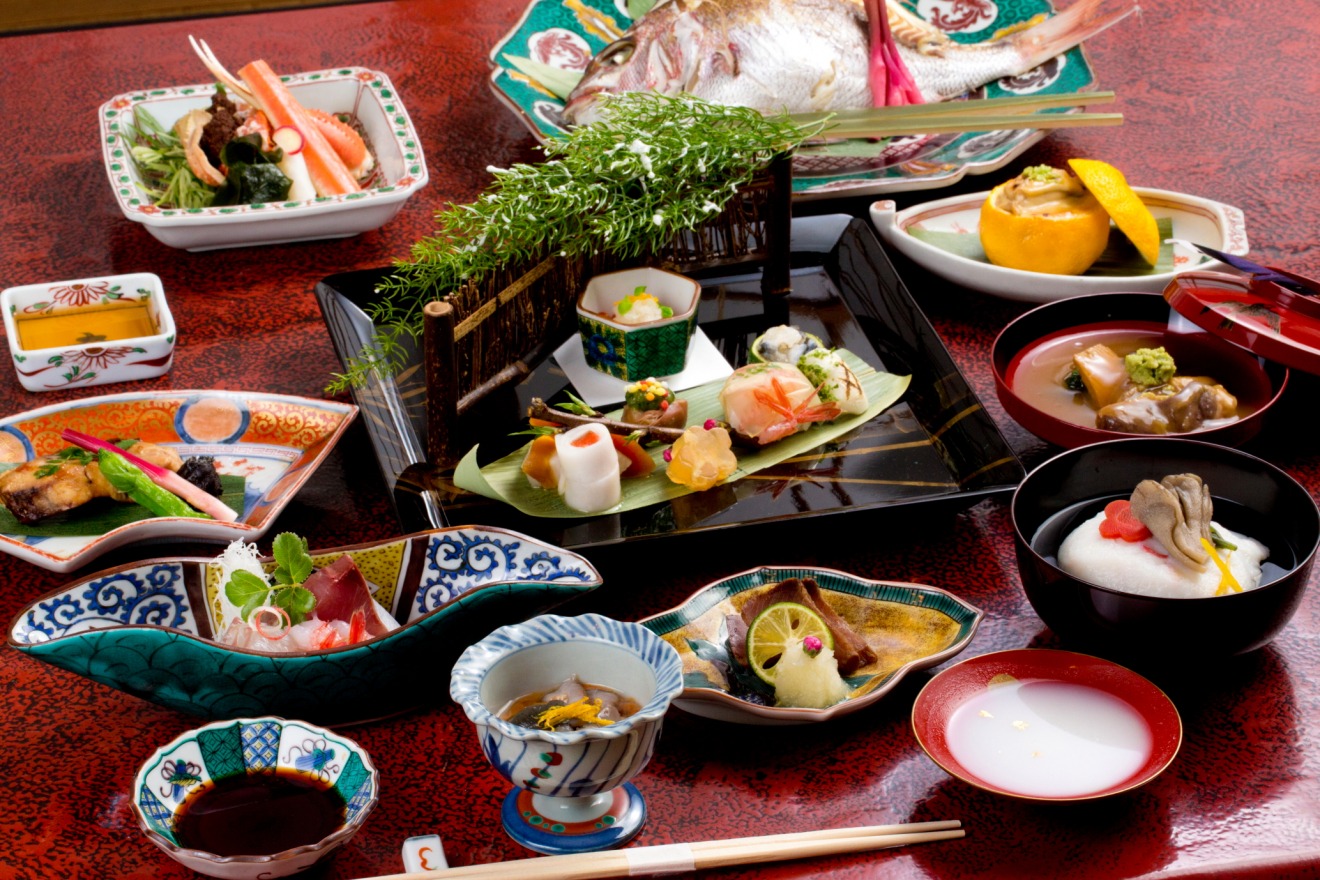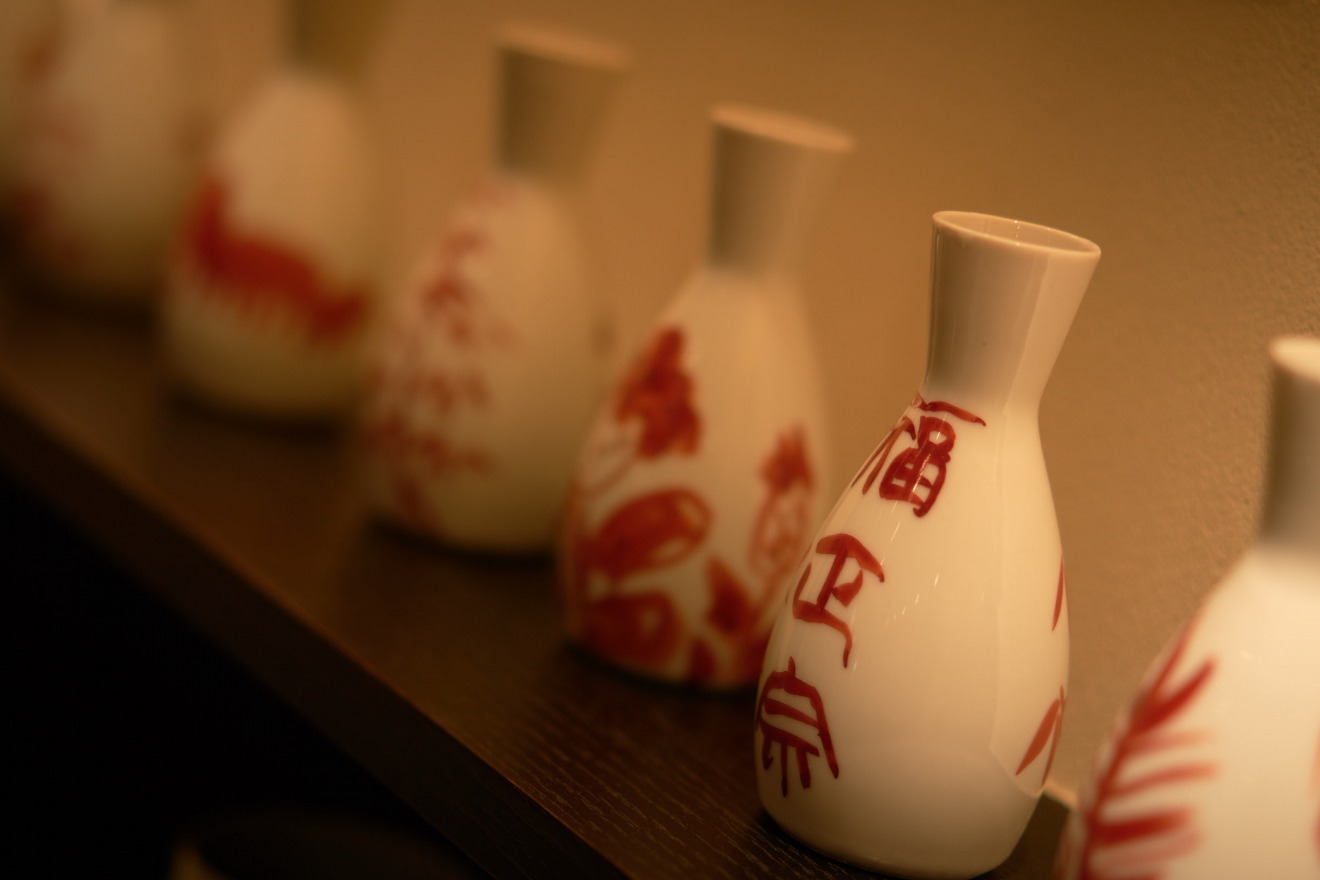Kanazawa Cuisine: A Delight to the Senses
From its lush mountains to its rich coastlines, Kanazawa produces an endless variety of ingredients to enrich its famous cuisine. Using seasonal local ingredients made to be as beautiful as it is delicious, Kaga cuisine is a feast for the eyes as well as the stomach. Served in lovely crafted tableware in rooms intricately designed with traditional seasonal decor, Kaga cuisine can be an entire experience. As every visitor is an honored guest in Kanazawa, please try this distinctive cuisine, including the unique Jibu-ni: duck or poultry served in a thick, slightly sweet broth.
The Sea of Japan is home to the best Japanese seafood, including crab, sweet shrimp, and yellowtail. Sample the variety of fresh seafood in Kanazawa's many sushi restaurants or other restaurants at bustling Omicho Market, where locals shop for the freshest ingredients.
And no meal is complete without a round of Kanazawa sake made from local clear waters and abundant rice.

Kaga Cuisine
Rich foodstuff from mountain and ocean
Kanazawa is blessed with a variety of foodstuffs, such as rice cropped in the Kaga Plain, Kaga vegetables, water of good quality in the Hakusan Mountains, and fish and shellfish caught in the Sea of Japan.
Moreover, the production of soy sauce in the Ono area, advanced cooking techniques that was encouraged by the Maeda family, who ruled the Kaga Domain (the present Ishikawa and Toyama areas) in feudal times, and beautiful Kutani porcelain and lacquer ware raised the cooking culture of Kanazawa.
There are high-class restaurants where people enjoy eating Japanese food in beautiful Japanese-style rooms while looking at a Japanese garden.
Jibuni is traditional Kaga cuisine, made from boiled and seasoned duck coated with wheat, wheat gluten, and vegetables in thick soup.
RYOTEI -Peak Hospitality-
Sushi
Must-eat in Kanazawa is seafood
Fish and shellfish of the Sea of Japan are delicious in winter, in particular. A ban on crab harvesting is lifted on November 6 in Ishikawa Prefecture and crimson crabs are seen at shop fronts in the Omi-cho Market. In Kanazawa, the male snow crab is called "zuwaigani" and the female crab, which is twice as small, is called "kobakogani."
Late in November, when it becomes cold and many thunders are heard, matured yellowtail appears on the market. Buri daikon, made from yellowtail boiled with daikon radish is especially delicious. Kabura-zushi, which is made by cutting turnip into round slices that are pickled in salt, is famous as a specialty of Kanazawa. Salted yellowtail fillets are sandwiched between the pickled turnip slices, and pickled with a mixture of rice and rice malt.
Thanks to the delicious fish and shellfish, there are many sushi shops and sushi-go-round bars in Kanazawa, and the delicacy the sushi has obtained nationally high evaluation.
Kaga Vegetables
Certified Kanazawa Brand Vegetable
Kaga vegetables are indispensable to Kaga cuisine. There are 15 Kaga vegetables. These vegetables were planted in Kanazawa for the first time in 1945 or before. A leafy vegetable called "kinjiso" and red Japanese pumpkin are very unique to Kanazawa. These vegetables with high nutritional values are familiar home cooking vegetables as well in Kanazawa.
SAKE
The best land for brewing delicious sake
High-quality sake (Japanese rice wine) has been produced in Kanazawa for 400 years from rice harvested in the Kaga Plain and water taken from the Saigawa River and Asanogawa River in the cold winter of Kanazawa. The sake contains about 15% alcohol.
There are four brewing companies in Kanazawa, all of which have been in operation for more than 100 years. Kanazawa's sake tastes rich and goes best with the food of Kanazawa. The sake has been loved by local people in Kanazawa for a long time.
Japanese confectionery
The art work of confectioners
Kanazawa, Kyoto, and Matsue are called the three greatest Japanese place of confectionery making.
In the Edo period (1603 to 1867), the Maeda family promoted the tea ceremony. This developed confectionery indispensable to the tea ceremony. Japanese sweets are made with advanced techniques in images of seasonal natural features from raw materials, such as rice, red beans, and sugar.
Special confectionery connected with auspicious occasions, such as New Year cerebrations and weddings, have been developed. You can see a wide variety of colorful sweets including a brand that has been continuing for more than 380 years and sweets made with materials and techniques of Western-style cakes.


















